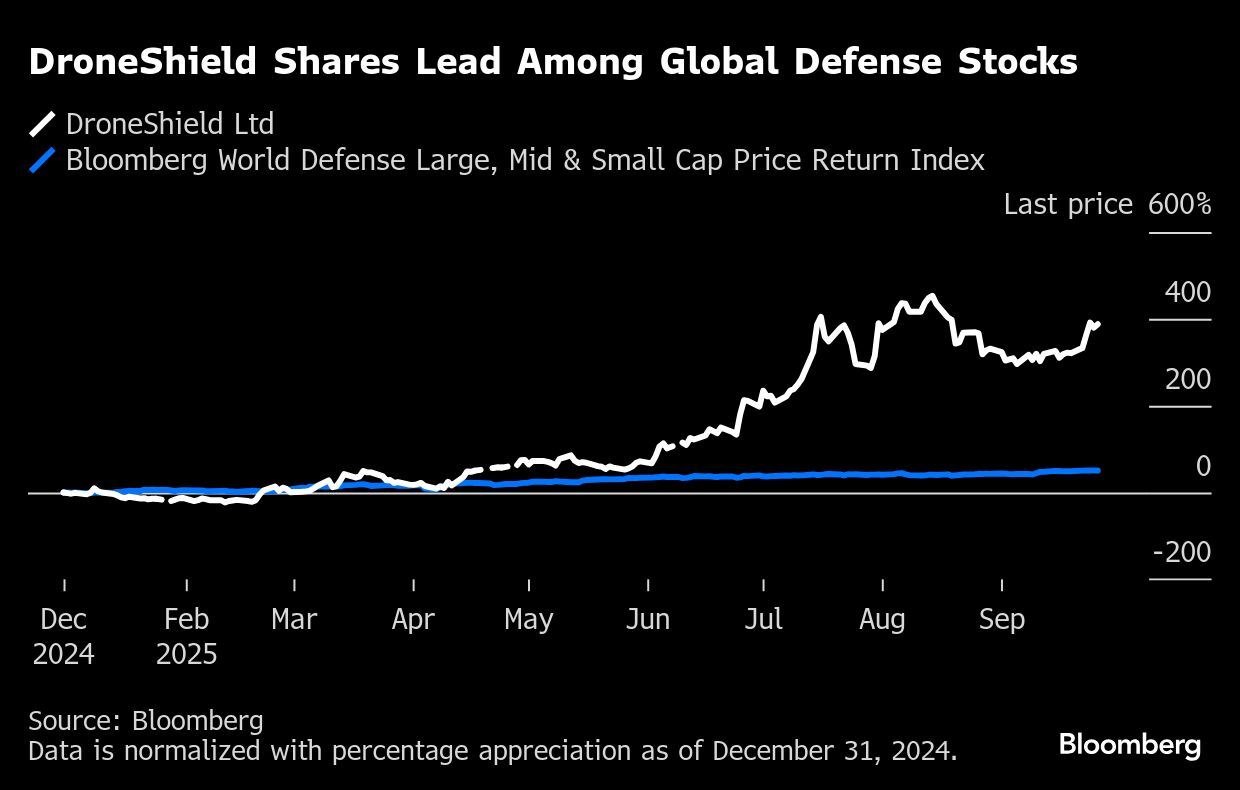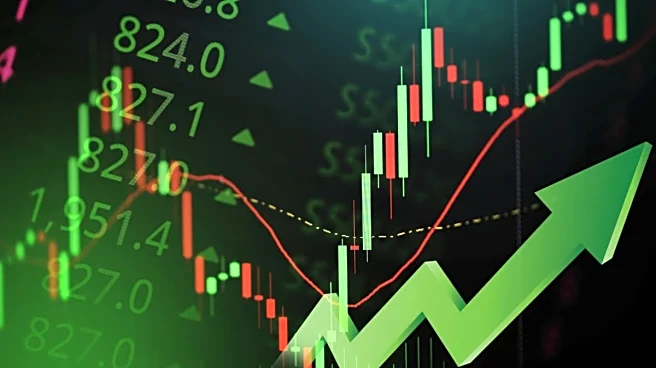The stock has jumped 388% in 2025, outpacing regional peers on a Bloomberg gauge focused on defence firms. A string of contract wins with governments in Australia, the US and Europe have boosted its shares, which joined Australia’s benchmark equity index earlier this month.

The value of contracts received this year “is evidence of increased levels of consumer demand,” which the company is well placed to meet, said Bell Potter Securities Ltd. analyst Daniel Laing in a note last month. The growth of asymmetric warfare, including drones and counter-drones, is also central to the firm, he added.
Defence stocks have rallied this year as ongoing conflicts and geopolitical tensions have spurred governments to ramp up spending. South Korea’s Hanwha Aerospace Co. has benefited from its experience in producing weapons for defeating Soviet-era systems, while Chinese defence manufacturers
DroneShield develops products to ward off drone attacks by tracking and disabling unmanned aircraft systems. Its stock surged in June after securing a package of European contracts worth A$61.6 million ($40.3 million), its largest order ever. The firm also recently won a package of two US Department of defence contracts totaling A$7.9 million. The stock rose 1.6% on Friday.
In August, the company said its first-half revenue more than tripled from a year earlier. It attributed the increase to growth in regions beyond its key US market, including in Europe and the Asia Pacific.
Still, some investors are skeptical of the stock’s surge. The firm’s “stretched” fundamentals at its A$3.3 billion market capitalization is one reason to be cautious, said Ben Richards, co-portfolio manager at Seneca Financial Solutions. DroneShield trades at a forward price-to-earnings ratio of roughly 71 times, a premium to Australia’s S&P/ASX 200 Index.
Additionally, some directors have sold shares in the company during rallies, “which is a warning sign for us,” Richards added.

/images/ppid_59c68470-image-175885015539474424.webp)
/images/ppid_59c68470-image-175876506344950792.webp)
/images/ppid_59c68470-image-175867759031387129.webp)
/images/ppid_59c68470-image-175868007251368297.webp)
/images/ppid_59c68470-image-175864006621987821.webp)
/images/ppid_59c68470-image-175878503678011281.webp)
/images/ppid_59c68470-image-175872009505789258.webp)



/images/ppid_59c68470-image-175872007702297643.webp)